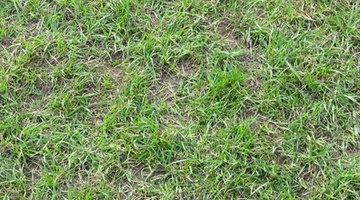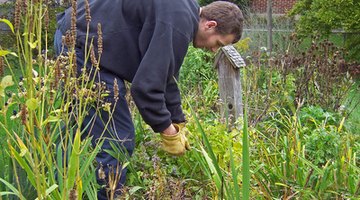When Aprils showers bring May's flowers they also deliver perfect conditions for slime moulds, also spelt mould, to form on soil, grass and plants. Slime moulds are fungus organisms. They thrive in damp, shady places like the surface soil of lawns, and organic compost and mulch. According to the Dirt Doctor, slim mould is mostly an aesthetic issue. There a few simple and environmentally friendly things you can do if this pesky spring visitor plagues your yard.
Identifying slime mould

Recognising slime mould is relatively easy. It appears in a range of colours from black-brown, to off white or salmon, brick red, mustardy yellow or orange. Some appear in the spring and look like white-ish bubbles of clay or plaster on lawns and plants.
Significance

As mould spreads, it generates white, and purple-ish-grey patches in the lawn. These are generally more noticeable in the morning. Later in their life progression they cause grey or black crusty powder balls to collect on the grass looking like cigarette-ash on the blades.
Geography

Molds occur mostly during the spring in warm, wet conditions and may crop up in the same location each year. During episodes of extended rainfall and high humidity slime moulds can form on and then thrive in your more shaded grassy areas, potted plants and low hanging vegetation. Because slime mould grows only over the surface, it generally causes no damage to the grass itself. However, if left on grass for a long time it may eventually do harm. If the area is consistently in the shade, the lack of light may weaken the grass, cause it to yellow and become more vulnerable to other moulds and diseases.
- Molds occur mostly during the spring in warm, wet conditions and may crop up in the same location each year.
- If the area is consistently in the shade, the lack of light may weaken the grass, cause it to yellow and become more vulnerable to other moulds and diseases.
Prevention/Solution

Sweep slime mould off with a broom. If it's real stubborn, use a rake. Other than the plethora of chemical treatments found at your local gardening store, often baking soda spray, potassium bicarbonate will eradicate it--so will sprinkling cornmeal. To avoid mould in your more shaded areas, water in the morning and allow lawn to dry over the course of the day. Water less often, and for a longer time instead of watering daily. If the mould continues to appear you can also make a mixture of vinegar as a fungal treatment and spray it on top of the soil a few times before you water.
- Sweep slime mould off with a broom.
- To avoid mould in your more shaded areas, water in the morning and allow lawn to dry over the course of the day.
Benefits
There is a benefit of moulds: they facilitate the break down of branches, fallen leaves and other types of dead plants that you add to your compost pile.
